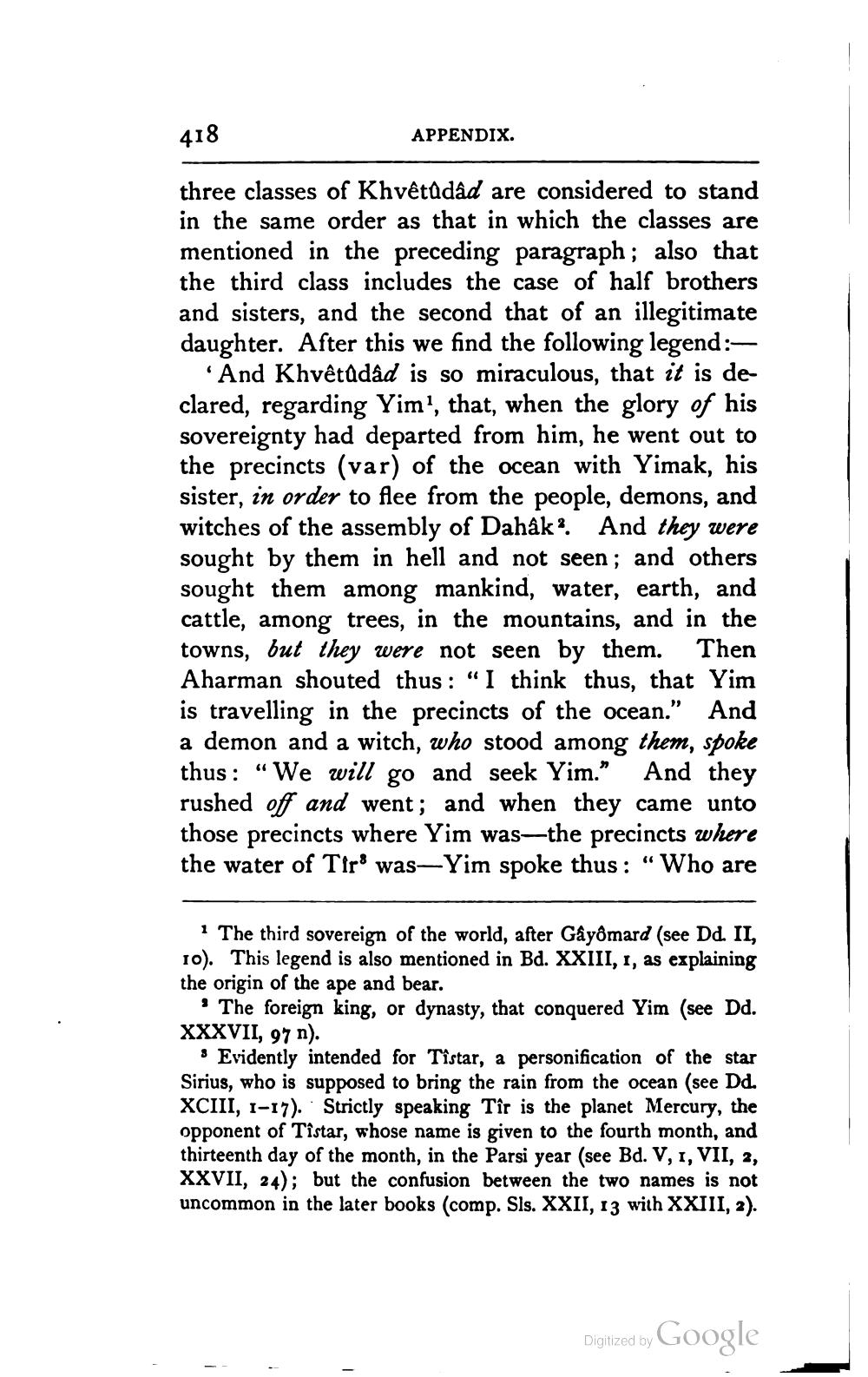________________
418
APPENDIX.
three classes of Khvêtadâd are considered to stand in the same order as that in which the classes are mentioned in the preceding paragraph; also that the third class includes the case of half brothers and sisters, and the second that of an illegitimate daughter. After this we find the following legend:
And Khvêtādad is so miraculous, that it is declared, regarding Yim', that, when the glory of his sovereignty had departed from him, he went out to the precincts (var) of the ocean with Yimak, his sister, in order to flee from the people, demons, and witches of the assembly of Dahâk? And they were sought by them in hell and not seen; and others sought them among mankind, water, earth, and cattle, among trees, in the mountains, and in the towns, but they were not seen by them. Then Aharman shouted thus: “I think thus, that Yim is travelling in the precincts of the ocean." And a demon and a witch, who stood among them, spoke thus: “We will go and seek Yim." And they rushed off and went; and when they came unto those precincts where Yim was—the precincts where the water of Tir' was—Yim spoke thus: “Who are
1 The third sovereign of the world, after Gâyômard (see Dd II, 10). This legend is also mentioned in Bd. XXIII, 1, as explaining the origin of the ape and bear.
• The foreign king, or dynasty, that conquered Yim (see Dd. XXXVII, 97 n).
* Evidently intended for Tîstar, a personification of the star Sirius, who is supposed to bring the rain from the ocean (see Dd. XCIII, 1-17). Strictly speaking Tîr is the planet Mercury, the opponent of Tîstar, whose name is given to the fourth month, and thirteenth day of the month, in the Parsi year (see Bd. V, 1, VII, 2, XXVII, 24); but the confusion between the two names is not uncommon in the later books (comp. Sls. XXII, 13 with XXIII, 2).
Digitized by Google




